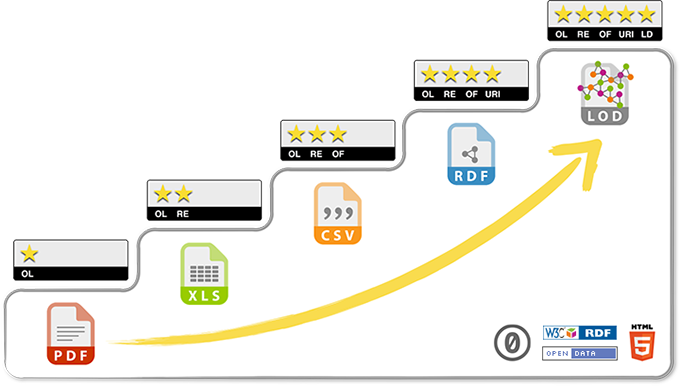Linked Data: Evolving the Web into a Global Data Space
This book remains my favourite reference on #LinkedOpenData
Linked Data: Evolving the Web into a Global Data Space
This book remains my favourite reference on #LinkedOpenData
Wonder if @NinaKSimon and other people in the Museum 2.0 sphere have worked on this type of thing. A few years ago, there were several beacon projects in museums. But it’s my first encounter with a museum using xAPI.
An institution has implemented a learning management system (LMS). The LMS contains a learning object repository (LOR) that in some aspects is populated by all users across the world who use the same LMS. Each user is able to align his/her learning objects to the academic standards appropriate to that jurisdiction. Using CASE 1.0, the LMS is able to present the same learning objects to users in other jurisdictions while displaying the academic standards alignment for the other jurisdictions (associations).
Sounds like part of the problem Vitrine technologie-éducation has been tackling with Ceres, a Learning Object Repository with a Semantic core.
Moving to a Web of Linked Data for Credential Ecosystems
Oh? Credentials going Semantic? CBE going TBL?

Might be worth a deeper discussion with @jeffgrann, at some point.
Annotation can help us weave that web of linked data.
This pithy statement brings together all sorts of previous annotations. Would be neat to map them.
Is it possible to add information to a resource without touching it?
That’s something we’ve been doing, yes.
Web Annotations
Obvious case for h. Imagine the possibilities of linked open data used in annotating presentations which would be part of scholarly books along with all the necessary material? The mind wanders…
Open data
Sadly, there may not be much work on opening up data in Higher Education. For instance, there was only one panel at last year’s international Open Data Conference. https://www.youtube.com/watch?v=NUtQBC4SqTU
Looking at the interoperability of competency profiles, been wondering if it could be enhanced through use of Linked Open Data.
add tags for categorization and search
Well-structured annotations can pave the way towards Linked Open Data.
deep linking
Ah, yes! It may sound technical to some, but there’s something very useful about deep linking which can help fulfill Berners-Lee’s Semantic Web idea much more appropriately than what is currently available. Despite so many advances in Web publishing (and the growing interest in Linked Open Data), it’s often difficult to link directly to an online item of interest. In a way, Hypothesis almost allows readers to add anchor tags to an element so it can be used in a direct link.
tout enregistrement MLR conforme au profil Normetic 2.0 est automatiquement conforme au profil d’application MLR de base.
L’interopérabilité est essentielle à l’avènement du Web des données liées (en éducation comme ailleurs).
Among the most useful summaries I have found for Linked Data, generally, and in relationship to libraries, specifically. After first reading it, got to hear of the acronym LODLAM: “Linked Open Data for Libraries, Archives, and Museums”. Been finding uses for this tag, in no small part because it gets people to think about the connections between diverse knowledge-focused institutions, places where knowledge is constructed. Somewhat surprised academia, universities, colleges, institutes, or educational organisations like schools aren’t explicitly tied to those others. In fact, it’s quite remarkable that education tends to drive much development in #OpenData, as opposed to municipal or federal governments, for instance. But it’s still very interesting to think about Libraries and Museums as moving from a focus on (a Web of) documents to a focus on (a Web of) data.
Les représentants de la Bibliothèque nationale de France (BnF) annoncèrent leur objectif de ramener le délai de traitement des documents à six semaines en moyenne
C’était long, en 2002! Où en est la BnF, aujourd’hui? D’une certaine façon, ce résumé semble prédire la venue des données, la fédération des catalogues, etc. Pourtant, il semble demeurer de nombreux obstacles, malgré tout ce temps. Et si on pouvait annoter le Web directement?
some kind of curated library
Which is where OER catalogues (tied to the Semantic Web) may shine. Sure, they can require a lot of work. But this is precisely why they matter.
why not annotate, say, the Eiffel Tower itself
As long as it has some URI, it can be annotated. Any object in the world can be described through the Semantic Web. Especially with Linked Open Data.
long time curating these tomes
Part of the argument for OER might come from more efficient ways to curate this type of material. Creating textbooks is some people’s main goal, but there’s a whole lot to be said about Open Coursepacks in Linked Open Data.
If you deal with PDFs online, you’ve probably noticed that some are different from others. Some are really just images.
First step in Linked Open Data is moving away from image PDFs.
Données liées historiques : de la nécessité d’un partenariat entre les sciences de l’information et l’histoire
Linked Open Data could work well in education
publisher or museum
Potential for LODLAM!